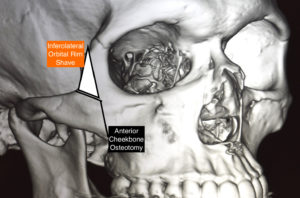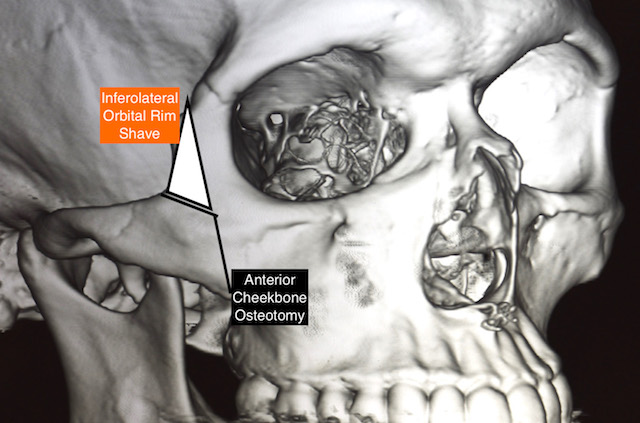Cheekbone reduction surgery is a common procedure in Asian facial reshaping. A variety of techniques have been described to reduce prominent cheekbones which consists of anterior zygomatic osteotomies and posterior zygomatic arch osteotomies to move the width of the cheekbones inward. While effective for many patients it does not treat the complete skeletal problem which can extend upward into the lateral orbital rim as well as the overlying position of the lateral canthal angle.

Before and after surgery measrements showed an average decrease in surface area from around 23,000 mm2 to around 19,000 mm2. (18.5% decrease) The upper slanting eye corner was lowered and the protruding cheekbone and infer lateral orbital rim reduced in all cases. Four complications occurred asymmetry (2) and wore eyelid malposition. (2)
The simultaneous lowering lateral canthoplasty and inferolaterial orbital rim shave offers an enhanced facial slimming effect to cheekbone reduction surgery in select Asian patients. The risks are that of lower eyelid malposition and adverse scarring which are additional risks of any lower eyelid procedure.
Dr. Barry Eppley
Indianapolis, Indiana



